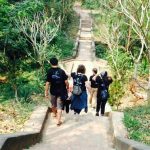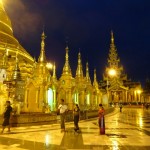By: Nicole Long- Laos Country Director
The Lao New Year, Pi Mai, is one of the biggest and most widely celebrated festivals in Laos. It takes place in April, one of the hottest months of the year right before the start of the monsoon season. The official Pi Mai days are 13-15 April, but celebrations take place the entire week, especially in Luang Prabang. Lao people take every chance they get to throw a party!
There are many traditions observed and practiced during Pi Mai. One of the most prominent aspects of the festival is water. Water is used for washing Buddha images, monks, homes, businesses and people in the streets. It’s very difficult to stay dry during the week of Pi Mai in Luang Prabang (or throughout the entire country).

Water symbolizes the washing away of bad aspects of the previous year. By, quite literally, cleansing yourself of the problems of the past, you start off the New Year with a clean slate. The water used to wash Buddha images is perfumed with flowers and sometimes with cologne. Many revered Buddha images are brought out from the temples and paraded up and down the streets for people to pour scented water on them and make wishes for the next year. In Luang Prabang, the most revered image is the Prabang Buddha which is thought to possess extremely protective powers and has long been seen as a symbol of religious and political authority (including the legitimate right to rule Laos when the country existed as a kingdom).

Masses of people come from all over in order to wash the Prabang Buddha and ask for good health and life in the coming year.
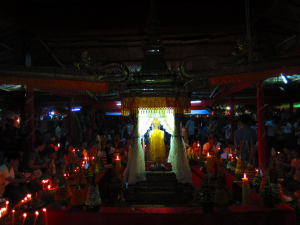
Washing the Buddha is not the only way in which one brings merit to his or her life. Other ways in which a person can receive merit during New Year is by building a sand stupa. In Luang Prabang it is tradition for people to cross the Mekong River and build sand stupas along the riverbank. The beach on the other side of the Mekong from the center of town is covered in little sand stupas and transformed into a market and disco. There is food, drinks and dancing- all the ingredients for a perfect celebration. Before people partake in the fun they build stupas and decorate them with flags, flowers, powder and perfumed water. Many will also take sand to the temples and build a stupa for the monks in order to accrue more merit.
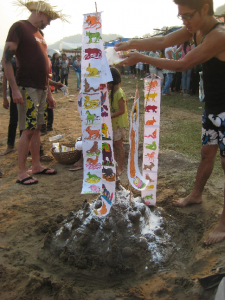
In Luang Prabang there is also an annual beauty pageant to crown Miss Pi Mai. This is one of the most widely known pageants in Laos, but it is only held in Luang Prabang. There are many girls vying for the top title but only seven will be chosen as final contestants, each one symbolizing one of King Kabinlaphom’s seven daughters. The girl who is crowned Miss Pi Mai will make her first appearance at the Pi Mai parade that is held on the 14 and 15 of April. She is usually perched atop the animal/spirit that symbolizes the coming year with the other final contestants at the bottom sprinkling the way with perfumed water and rose flower petals. The revealing of Miss Pi Mai to the public is the climax of the parade.
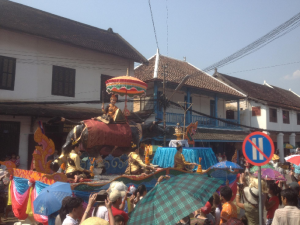
Along with Miss Pi Mai, the other most celebrated participants in the parade are Pou Nyeu and Nya Nyeu, who represent the ancestors of all Lao people. In addition, there are people walking in the parade that represent different ethnic groups, organizations and unions. They also have performances along the way from sword dancers, demonstrating traditional Lao fighting, and drummers.

Even though Pi Mai is steeped in many traditions in Luang Prabang, the traditions can be overshadowed by the fun and water throwing. Traditionally, you would be gently sprinkled or slowly doused with water but now the traditional water throwing is replaced by people chucking water buckets or forcefully spraying you with water guns or hoses. People have parties at almost every house or business in town and play in the water with each other and every one that passes by. If you’re in town don’t expect to be dry for at least 4 days! Many people will load up onto trucks with giant buckets full of water and go around town soaking people on the street.
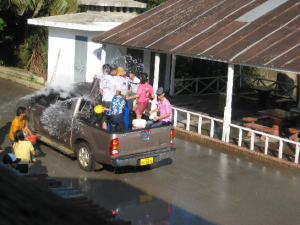
This is a time in which the local people really let their hair down and turn into something that you don’t see any other day of the year. It is fun to join in with locals in the water throwing on a hot day but it is still nice to remember the traditions and symbolism associated with the festival.
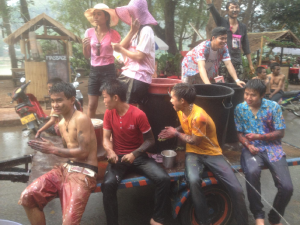
Interested in how other parts of Southeast Asia welcome in the New Year?
Check out related blog posts here: Cambodia, Thailand, Vietnam, Myanmar


